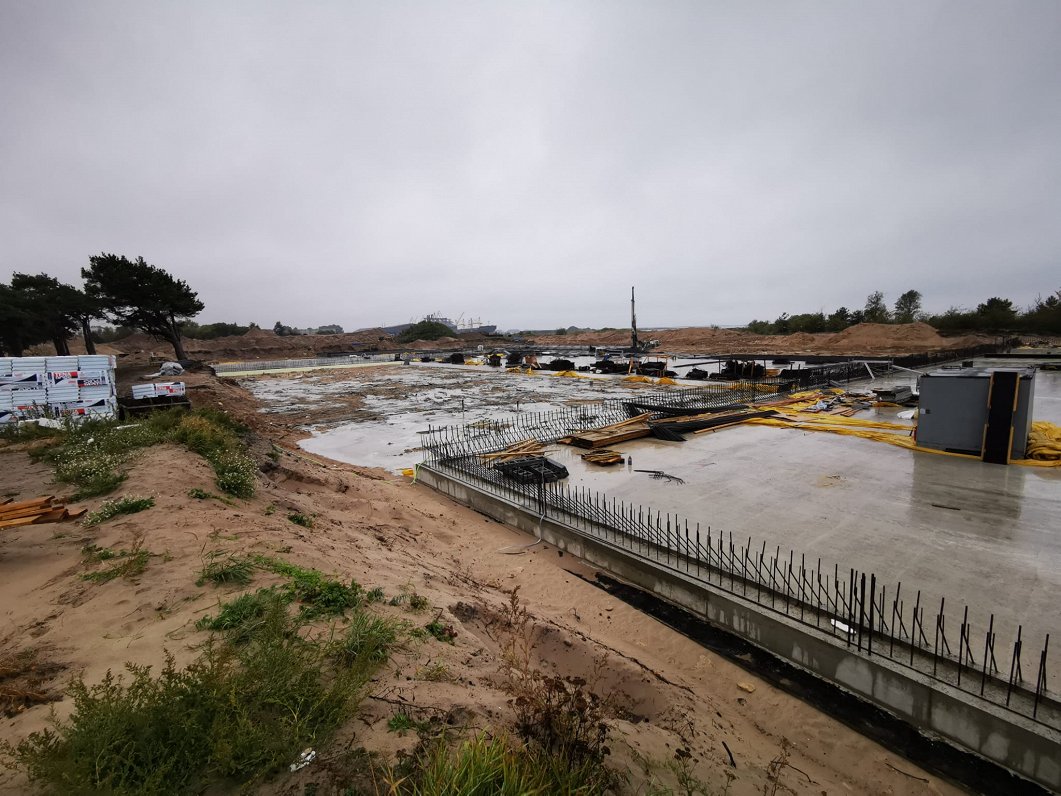Liepāja Special Economic Zone (SEZ) manager Uldis Hmieļevskis said that a water storage unit will be constructed near the Karosta bridge. "60 thousand cubic meters for simultaneous storage, which will be pumped slowly and carefully into the reservoirs from the Liepāja water network so that it could be delivered to the tanker, which will take the water to the customers," Hmieļevskis said. "It's the same water we drink from the tap every day. The amount allowed in Liepaja is around 10 million cubic meters per year, with a real consumption of 3 million. The reserve is big enough. If there is black gold in other countries – oil, then we have transparent gold – it is our resource, while in other countries drinking water is a big problem."
The developers of the project are SIA EIPU, which is linked to the owners of the well-known drinking water producer Lielbāta.
Construction of the drinking water terminal, which also provides for the creation of a new quay, started this summer in the Liepaja port area. Jobs are carried out by the local company SIA “UPTK”. Chief Executive Zigurds Kirhners said that it is the largest project for the company. Total construction costs will reach €30 million. Building jobs have unveiled unexpected items and challenges.
“We dug up two very impressive World War I naval mines, one containing 120 kilograms of explosive. They were active, just needed some lead. The deminers warned that we could come across other mines of that time. By building up rainwater sewer nets, we found not only stocks of World War II ammunition, but the largest find was 265 artillery shells,” said Kirhners.
By now, 12% of the planned terminal has been built. “At the moment, the contours can already be guessed. Two reservoirs, each around 30 000 tonnes, will also be in the distant part. In the middle part, there will be 21 600 cubic meters of water storage. A water pipeline of 30 centimeters in diameter is constructed from “Liepaja Water”, which will pump in water stored here until the ship arrives. There will also be a quay and a filler site, then a fatter pipeline will deliver water to ships,” said Kirhners.
The economic benefits for the city are too early to call, but it has been estimated in the future such a solution, as an additional income for Liepāja Water, could reduce the city's water tariff.
The construction of the drinking water terminal in Liepāja is scheduled to be completed in 2024.































